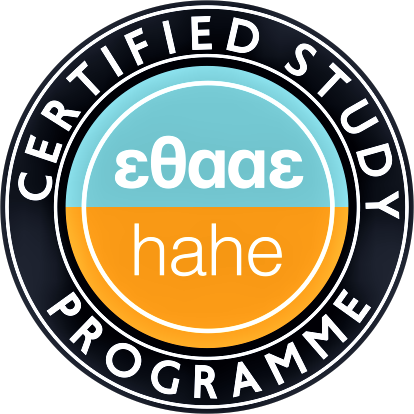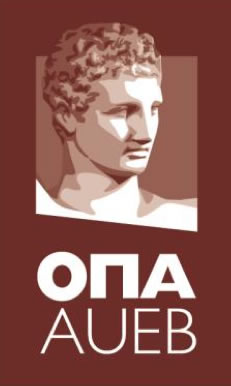Ε11. Digital Technologies in papyri and manuscripts
Instructor: Stamatis Bousses (coordinator)
Elective, Teaching Period C, ECTS: 3,
Description
The course offers a modular interdisciplinary approach that focuses on completing the knowledge and developing the skills needed to utilize the link between Papyrology and Paleography and computer science. The course aims at training and know-how in those fields related to the management of the text carriers and the texts themselves, such as those found in papyri and manuscripts.
Target learning outcomes
- They will learn how to find texts on papyri and manuscripts and analyze them, in order to develop and answer research questions and understand remote research techniques and methods.
- They will gain supervision in the field of digital Papyrology and Paleography and technical skills and abilities that enable the treatment, preservation, dissemination and use of these primary sources in digital media.
- Will be able to locate primary and secondary papyrus and palaeographic sources on the internet and in libraries and use these sources to evaluate and determine how papyriologists and palaeographers use them to compose and deepen their analyses.
- They will specialize in the use of different techniques and types of digital data representation, in digital technologies for the processing of different types of data and will evaluate these theoretical approaches and methodologies in terms of their epistemological and practical adequacy.
- Utilize the potential of specific data types and data sets and apply their knowledge to identify how systematic data collection can influence the understanding and analysis of papyrus and manuscript collections.
- They will have the opportunity to think critically about the ways of collecting, analyzing and editing the data of Papyrology and Paleography.
Prerequistes
None
Contents
1ο Lecture (Grace Ioannidou): Introduction to Papyrology and Paleography and their digital tools.
2ο Lecture (Stamatis Bouses): Digitization of papyri and manuscripts (visualization, restoration, representation), creation and processing of images and management of digital collection.
3ο Lecture (Raimondo Tocci): Digital coding: the description of the object and its digital recording (requirements for metadata, special categories such as papyrus files, bibliographic notes and page comments).
4ο Lecture (Maria Konstantinidou): Digital Paleography. Image enhancement techniques. Mechanical reading of manuscripts (HTR).
5ο Lecture (Stamatis Bouses- Maria Konstantinidou): From manuscript to edition. Collatio and digital editions.
Teaching Method: Each Instructor according to the needs of the course.
Assessment Method: Weekly Project of developing essays or final written project.
Bibliography
- ANDORLINI, I. – REGGIANI, N. (2012), Edizione e ricostruzione digitale dei testi papiracei, in Diritto romano e scienze antichistiche nell’era digitale. Convegno di studio (Firenze 12–13 settembre 2011), a c. di N. Palazzolo, Torino, 131–46.
- DEL CORSO, L. (2007), Il progetto PSI On-Line: applicazioni informatiche per una filologia materiale dei testi papiracei, in Digital Philology and Medieval Texts. Proceedings of the International Seminar (Arezzo, 19–21 Gennaio 2006), ed. by A. Ciula and F. Stella, Pisa, 165–74.
- DELATTRE, A. – HEILPORN, P. (2014), Electronic Resources for Graeco-Roman and Christian Egypt: A Review of the State of the Net (March 2014), BiOr 71, 308–31.
- DEPAUW, M. – GHELDOF, T. (2014), Trismegistos. An Interdisciplinary Platform for Ancient World Texts and Related Information, in Theory and Practice of Digital Libraries. TPDL 2013 Selected Workshops, ed by Ł. Bolikowski, V. Casarosa, P. Goodale, N. Houssos, P. Manghi, and J. Schirrwagen, Berlin, 40–52.
- DRISCOLL, M.J. –PIERAZZO E. (2016), Digital scholarly editing: Theories and Practices in https://www.openbookpublishers.com/reader/483#page/1/ mode/2up
- FACCHINETTI, R. (2007), Theoretical Description and Practical Applications of Linguistic Corpora, Verona.
- FUERTES-OLIVERA, P.A. – BERGENHOLTZ, H. (2011), E-Lexicography. The Internet, Digital Initiatives and Lexicography, New York.
- FUERTES-OLIVERA, P.A. – TARP, S. (2014), Theory and Practice of Specialised Online Dictionaries. Lexicography versus Terminography, Berlin – Boston.
- FUERTES-OLIVERA, P.A. (2013), E-lexicography: The Continuing Challenge of Applying New Technology to Dictionary-Making, in The Bloomsburry Companion to Lexicography, ed. by H. Jackson, London – New York, 323–40.
- LEMBERG, I. (2001), Aspekte der Online-Lexikographie für wissenschaftliche W.rterbücher, in Chancen und Perspektiven computergestützter Lexikographie, hrsg. von I. Lemberg, B. Schr.der und A. Storrer, Tübingen, 71–91.
- MAGNANI, M. (2008), “Sapere ex indicibus”, in Scienze umane e cultura digitale. Atti della XVI Settimana della Cultura Scientifica (Parma, 16–17 maggio 2006), a c. di A.M. Tammaro e S. Santoro, Fiesole – Firenze, 127–38.
- MCGANN, J. (2010), Introduction, in Online Humanities Scholarship: The Shape of Things to Come, ed. by J. McGann, Houston, 1–4.
- REGGIANI, N. (2012), Le tavolette della mente. Risorse digitali e Antichistica: il caso della Papirologia, in Umanisti e risorse digitali, a c. di A.M. Tammaro, Parma, 88–110.
- REGGIANI, N. (2015), A Corpus of Literary Papyri Online: the Pilot Project of the Medical Texts via SoSOL, in Antike Lebenswelten Althistorische und papyrologische Studien, hrsg. von R. Lafer und K. Strobel, Berlin – New York, 341–52.
- REGGIANI, N. (2017), Digital Papyrology I. Methods, Tools and Trends, Berlin – Boston.
- SCHREIBMAN, S.– SIEMENS, R. – UNSWORTH, J. (2004), eds., A Companion to Digital Humanities, Oxford.
- SCHREIBMAN, S. – SIEMENS, R. –UNSWORTH, J. (2016) A New Companion to Digital Humanities, Chichester: Wiley Blackwell.
- STOKES, P.A. (2009), Computer-Aided Palaeography, Present and Future, in Codicology and Palaeography in the Digital Era, 309-338.
- SVENSSON, P. – GOLDBERG, D.T. (2015), eds., Between Humanities and the Digital, Cambridge (MA).
- VAN LIT L.W.C. (2019), Among Digitized Manuscripts. Philology, Codicology, Palaeography in a Digital World. Brill.



